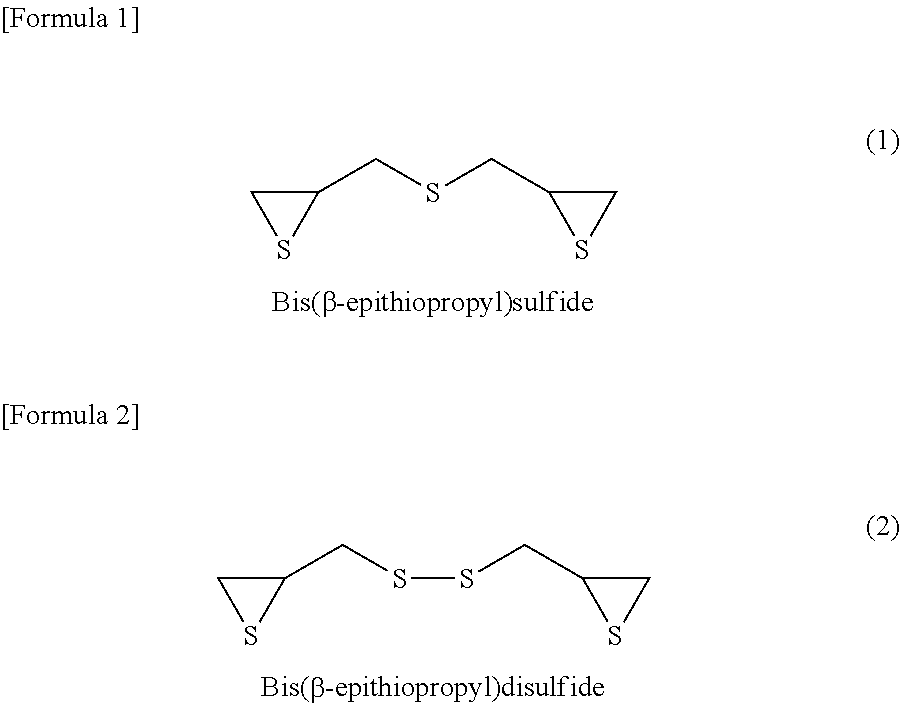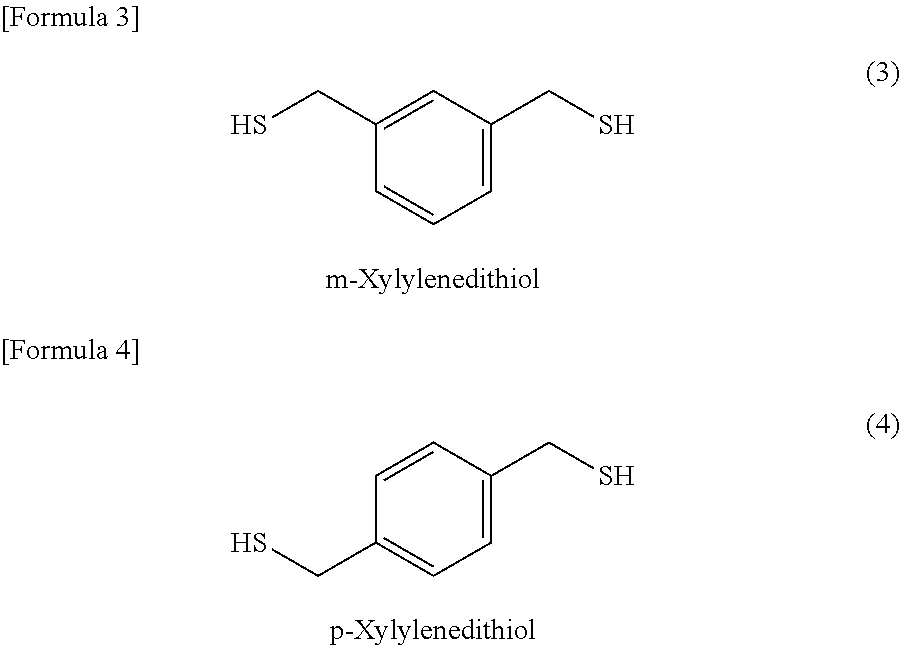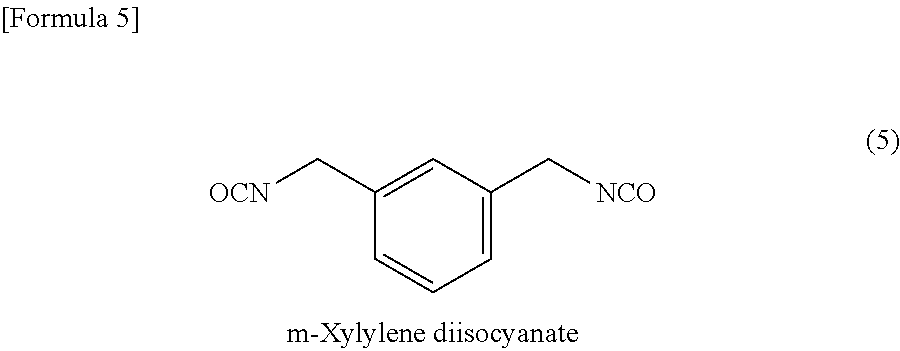Method for producing composition for optical material
a technology of composition and optical material, applied in the field of composition of optical material, can solve the problems of viscosity and therefore difficult casting, and it is difficult to practically prepare an optical material having a refractive index of 1.73 or higher, and achieves good drilling resistance, high refractive index, and high strength
- Summary
- Abstract
- Description
- Claims
- Application Information
AI Technical Summary
Benefits of technology
Problems solved by technology
Method used
Image
Examples
example 1
[0081]100 parts by mass in total of the compound (a) and the compound (b), i.e., 20 parts by mass of sulfur and 80 parts by mass of bis(β-epithiopropyl)sulfide (hereinafter referred to as compound b-1), respectively, were supplemented with 1 part by mass of 2-(2-hydroxy-5-tert-octylphenyl)benzotriazole as a UV absorber and mixed well at 50° C. into a homogeneous state. Then, 0.01 parts by mass of the pre-polymerization reaction-catalyzing compound (e), i.e., 1,2,2,6,6-pentamethylpiperidyl-4-methacrylate (hereinafter referred to as compound e-1) was added to effect pre-polymerization reaction at 50° C. until the compound (a) was no longer precipitated at 20° C.
[0082]In this example, it should be noted that the pre-polymerization reaction was stopped at a point where about 50 mol % of the compound (a) was reacted, and hence the resulting composition contains the compound (a) remaining in an unreacted state. The reaction rate of the compound (a) was determined by subjecting the reactio...
examples 2 and 3
[0085]The same procedure as shown in Example 1 was repeated, except for changing the amounts of the compound (a) and the compound (b). The resulting optical materials were evaluated for their refractive index and Abbe's number, heat resistance, elongation and drilling resistance, and the results obtained are shown in Table 1.
example 4
[0086]The same procedure as shown in Example 1 was repeated, except for changing the amounts of the compound (c) and the compound (d). The resulting optical material was evaluated for its refractive index and Abbe's number, heat resistance, elongation and drilling resistance, and the results obtained are shown in Table 1.
PUM
| Property | Measurement | Unit |
|---|---|---|
| refractive index | aaaaa | aaaaa |
| softening point | aaaaa | aaaaa |
| elongation | aaaaa | aaaaa |
Abstract
Description
Claims
Application Information
 Login to View More
Login to View More - R&D
- Intellectual Property
- Life Sciences
- Materials
- Tech Scout
- Unparalleled Data Quality
- Higher Quality Content
- 60% Fewer Hallucinations
Browse by: Latest US Patents, China's latest patents, Technical Efficacy Thesaurus, Application Domain, Technology Topic, Popular Technical Reports.
© 2025 PatSnap. All rights reserved.Legal|Privacy policy|Modern Slavery Act Transparency Statement|Sitemap|About US| Contact US: help@patsnap.com



